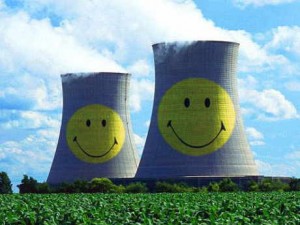20th June 2013 Ottawa, Canada
Delivering on UK’s Renewed Interest in Nuclear Energy

The nuclear renaissance
The detrimental impact of the coal industry on the environment, concerns over depleting fossil fuel reserves, and difficulty in keeping carbon emissions at bay has landed nuclear power back on top of the UK’s political agenda. Currently, the 16 reactors in the UK contribute 19% of electricity to the energy mix, and all but one of these reactors will be shut down by 2023.
Despite the Fukushima accident, however, a YouGov survey conducted in July of 2012 found that 63% of Britons supported the use of nuclear power. The nuclear energy reform received further backing from John Hayes, the Department of Energy and Climate Change (DECC)’s Minister of State:
“New nuclear will help diversify our electricity supply and improve our energy security. Nuclear is also cost-competitive with other generation technologies and is expected to be one of the cheapest sources of low carbon electricity in the future.”
With blessings from the public and the DECC, the UK government is set to establish itself as the flagship country for a nuclear energy renaissance. The Government estimates that of the 60 GWe of net new generation of energy capacity required by 2025, 25GWe is to come from nuclear. It is projected that 16 GWe of the new nuclear capacity would come from twelve new reactors at five new sites to be built by 2030. The first of this new fleet recently gained approval by the Energy Minister to be built at Hinkley Point C in Somerset by the French energy company, EDF.
With the impending launch of a new fleet of nuclear reactors, the UK government has set out the following key enablers that will help realize the full potential of nuclear power, and achieve the vision of a low-carbon economy for the nation:
1. Research & Development
2. Nuclear skills development
3. International collaboration
Canadian nuclear strengths
Canada has been a leader in nuclear research and technology, exporting reactors as well as a high proportion of radioisotopes used in medical diagnosis and cancer therapy to countries around the world. The thriving nuclear research and technology sector on this side of the pond makes Canada a natural and strategic partner to deliver on the UK’s nuclear power priorities.
In 2012, nuclear power contributed 15.2% to the energy mix, with hydro power generating nearly half of the total energy capacity in Canada. Sixteen of the eighteen Generation III Candu reactors in Canada are situated in Ontario, accounting for 53% of Ontario’s electricity production.
Developed by the Atomic Energy of Canada Limited (AECL), Candu reactors use natural as opposed to enriched uranium, which greatly cuts down on cost incurred through the enrichment process. Also, Candu reactors are versatile and can easily convert to thorium fuel cycle, producing a higher energy yield while reducing nuclear waste generation. However, the new Generation III+ Advanced Candu Reactors (ACR-1000) developed by AECL are an evolutionary derivative of the Enhanced Candu 6 (EC 6) reactor and can generate 50% more power than a conventional EC 6 reactor. The ACR-1000 is projected to be on the commercial market by 2016.
Canada is also leading on the Generation IV International Forum, which was setup in 2000 to shape the future of nuclear energy. This new line of reactors to be launched between 2020 and 2030 are being developed on the basis of eight key technology goals for clean, safe and cost-effective means of meeting increased energy demands.
In addition to commercial nuclear reactors, Canada is home to 7 research reactors that facilitate world-class neutron beam and nuclear reactor research. AECL’s National Research Universal (NRU) reactor at the Chalk River Laboratories in Ontario is one of the largest and most versatile research reactors in the world. The NRU is not only the test-bed for Canada’s nuclear electricity industry, but is also the largest supplier of the world’s radioisotopes. NRU also produces neutrons used for neutron scattering research conducted at the Canadian Neutron Beam Centre, which itself enjoys international reputation for taking an integrated approach to using neutron beams for materials research.
Five other reactors are situated at universities across Canada that support nuclear education and neutron research. These include the 20 kWth SLOWPOKE-2 reactors at the University of Alberta (Edmonton), Saskatchewan Research Council (Saskatoon), Royal Military College (Kingston), and L’Ecole Polytechnique (Montreal), and the 5 MWth MTR-type reactor at McMaster University.
The AECL’s NRU reactor is over 50 years old and has faced two major shut-downs in the past. As a result, the Canadian Institute for Neutron Scattering (CINS) championed the proposed launch of the Canadian Neutron Centre (CNC) in the horizon of 2050. Intended to meet Canada’s long-term neutron scattering and CANDU-development requirements, the proposed CNC is set to surpass the NRU reactor in each of its primary functions. CNC will not only be an important aspect of Canada’s infrastructure for science and industry, but more importantly will enhance Canada’s position of excellence and leadership in the global network of nuclear research laboratories.
Our SIN team will work closely with UKTI to deliver on the Joint Declaration Statement between Canada and the UK by facilitating and promoting collaboration between the civil nuclear power generation sectors.